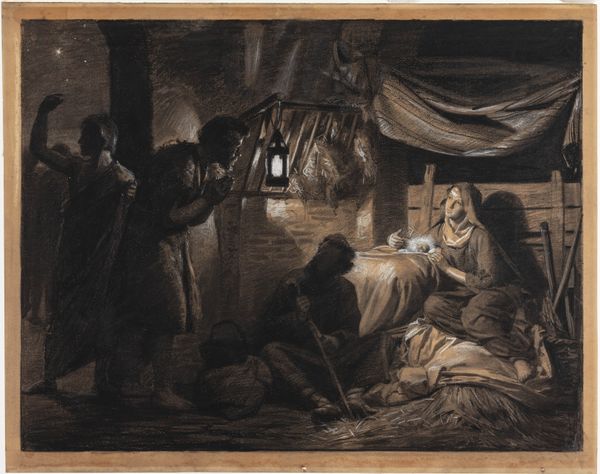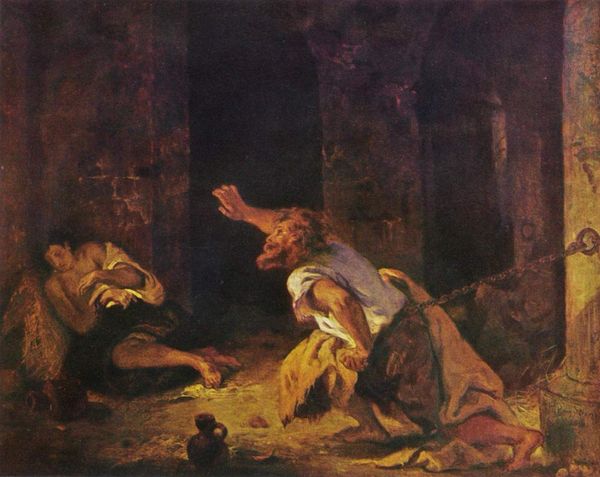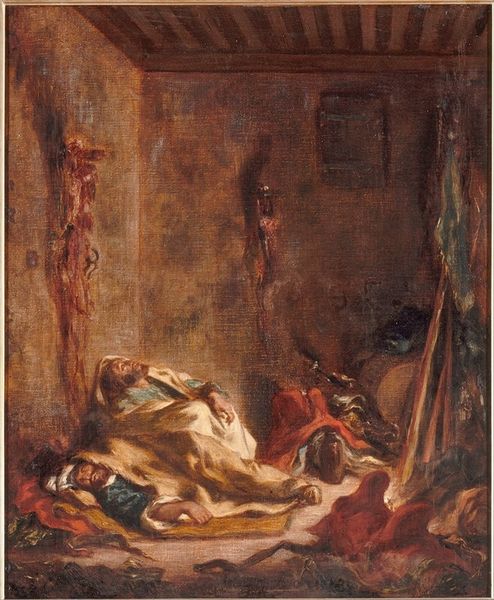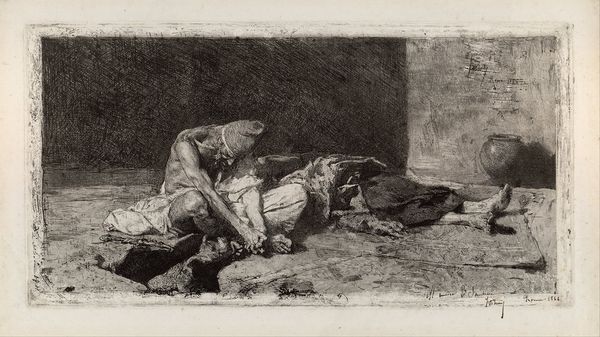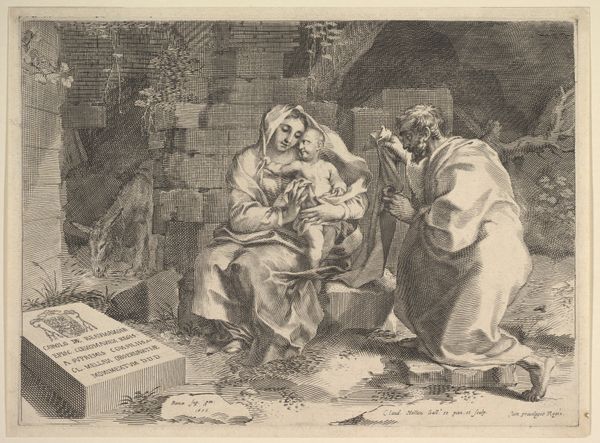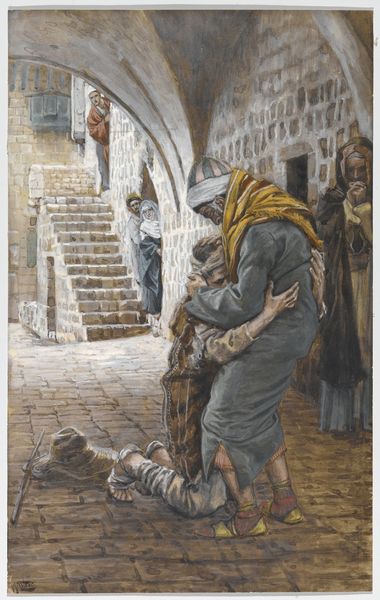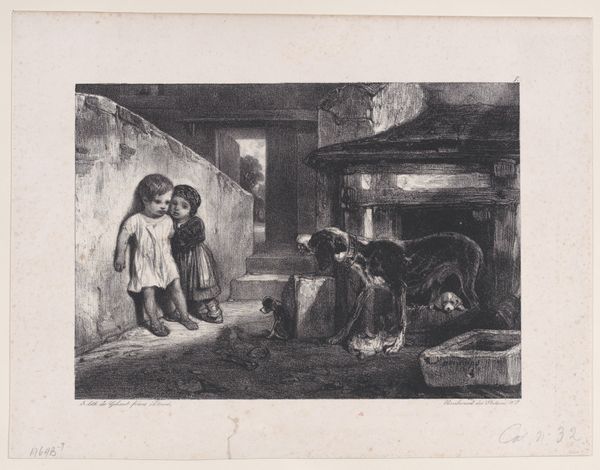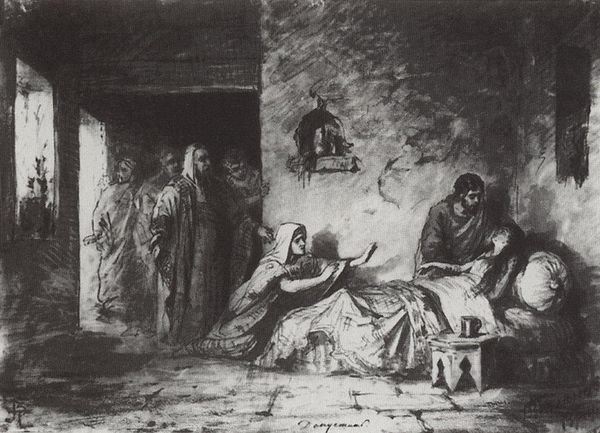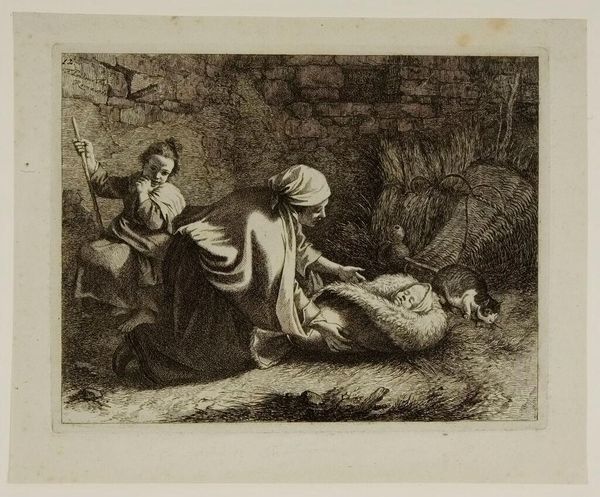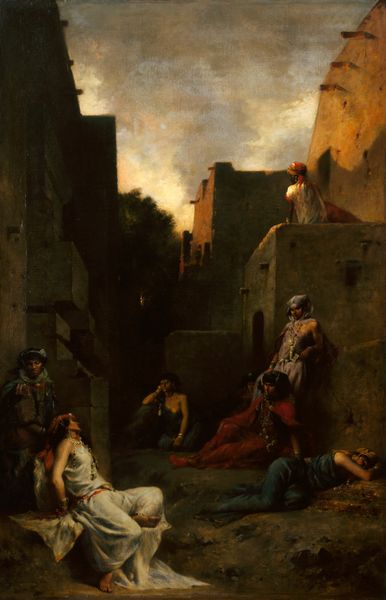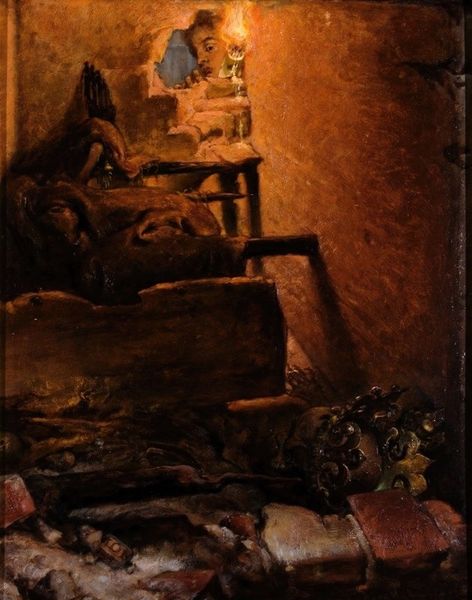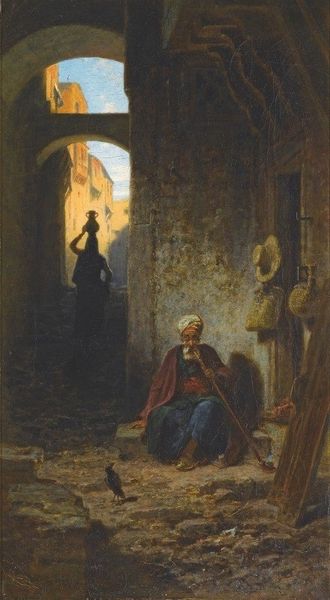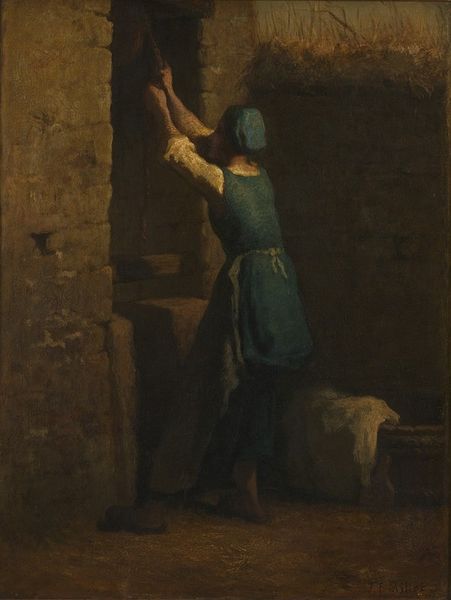
painting, watercolor
#
painting
#
figuration
#
oil painting
#
watercolor
#
watercolour illustration
#
genre-painting
#
history-painting
#
watercolor
Copyright: Public domain
James Tissot painted 'The Lost Drachma', depicting a biblical parable, with watercolor over graphite. A woman is consumed by a desperate search, a candle casts a dim light, revealing her distress. The act of searching, especially on hands and knees, appears in many cultures, signifying not just physical searching but a deeper quest for meaning or redemption. Consider the posture—bent low, face near the ground—it's reminiscent of ancient forms of supplication. We see echoes of this in Egyptian art, where figures prostrate themselves before deities. The candle is another powerful symbol, of course. It represents hope, but also the fragility of that hope. The flickering light suggests the precariousness of existence. Think of similar light motifs in Caravaggio, where light pierces the darkness, revealing moments of profound spiritual significance. This image taps into a collective memory, resonating with our own experiences of loss and the universal desire to find what is missing. Like a dream symbol, Tissot's composition evokes subconscious emotions, a reminder of how deeply ingrained these cultural motifs are. The act of searching itself becomes a mirror reflecting the cyclical journey of loss, rediscovery, and the enduring human quest for meaning.
Comments
No comments
Be the first to comment and join the conversation on the ultimate creative platform.
